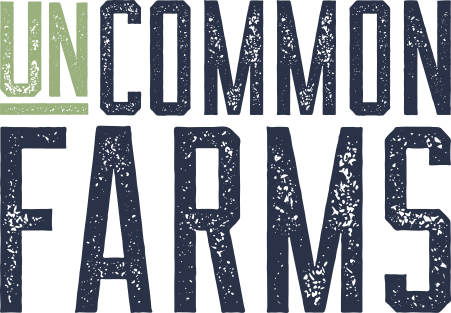Like-kind exchanges, formally known as Section 1031 Exchanges, are one of the most effective ways for farmers and landowners to defer capital gains taxes when selling farmland or agricultural real estate. By reinvesting sale proceeds into another qualifying property, you can keep more of your money working in the farm business rather than paying a large tax bill. In this article, we’ll break down how like-kind exchanges work for farmland, what qualifies, key rules to follow, and common pitfalls farmers should be aware of.
What Is a Like-Kind Exchange?
Under IRS Section 1031, if business or investment real property is exchanged solely for other business or investment real property of a similar type, no gain or loss is recognized.
That means:
- The property sold must be for business or investment purposes—not personal use.
- Farmland qualifies if it was purchased to farm or rent, not for resale.
- Personal property, such as farm equipment, does not qualify.
This can create challenges when improvements like fences, grain bins, tile, or confinement buildings are involved, since they follow different depreciation timelines. We’ll explain how those items are treated later.
For a deeper dive into how depreciation works and how to calculate deductions for farm assets, see our post on Depreciation: What You Can Deduct and How to Calculate Deductions.
What Qualifies as “Like-Kind” Property?
The IRS defines like-kind properties as being of the same nature or character, even if they differ in quality.
For farmers, that means:
- Farmland for farmland is a valid exchange.
- Farmland for other income-generating real estate (e.g., an apartment complex) can also qualify.
- Property inside the U.S. can only be exchanged for other U.S. property—land in South America or elsewhere does not qualify.
- Personal residences, vacation homes, or property used for personal purposes are not eligible.
In simple terms, “dirt can be traded for dirt” as long as the property is income-producing.
The Tax Advantages of a Like-Kind Exchange
The biggest advantage of a like-kind exchange is deferring taxes on the sale of farmland. Here’s a simplified example:
- You purchased 80 acres years ago for $1,000 per acre ($80,000 total).
- Today, you sell the same land for $10,000 per acre ($800,000 total).
- Without a like-kind exchange, you’d owe tax on a $720,000 gain.
With a like-kind exchange, you could reinvest in another property of equal value—say, another 80-acre farm—and defer the gain.
Keep in mind:
- The new property carries over the original basis (purchase price of $80,000).
- Taxes are deferred, not erased—unless the property is passed through an estate, where current rules allow for a step-up in basis, eliminating the deferred gain.
To further understand how asset basis and capital gains are calculated in farm real estate, see our article Understanding Capital Gains and Asset Basis for Farm Taxes.
Key Rules for a Valid Farm Like-Kind Exchange
To properly complete a like-kind exchange, farmers must follow these strict rules:
- 45-Day Identification Window – The replacement property must be identified within 45 days of selling the original property.
- 180-Day Closing Window – The replacement property must close within 180 days of the original sale.
- Qualified Intermediary Required – You cannot hold the sale proceeds yourself. A third-party intermediary must hold the funds.
- Cash Left Over is Taxable – Any remaining cash (“boot”) after the exchange is treated as taxable capital gain.
- Non-Qualifying Property Excluded – Items like grain bins, fences, or livestock buildings are not considered real property for 1031 purposes. Their fair market value (FMV) is subtracted and taxed as income in the year of sale.
Pro Tip: Line up a trusted Qualified Intermediary before you sell. Many local bank trust departments or specialized exchange companies provide this service.
Common Pitfalls Farmers Should Watch
A common oversight in farm real estate exchanges is the value of improvements. If most of your farm site’s value is in grain storage, livestock facilities, or similar structures, much of the gain may not qualify for deferral.
Another consideration is the reverse exchange, where you purchase a new property before selling your current one. The same 45-day and 180-day rules apply, but the process must also be handled through a Qualified Intermediary. Because cost segregation and the allocation of improvements among land, buildings, or machinery can materially affect deferred gain eligibility, you may want to review our post Farm Tax Guide: Buying & Selling Farmland and Cost Segregation for deeper insight.
Should Farmers Consider a Like-Kind Exchange?
Like-kind exchanges can be a valuable tool for farmers looking to upgrade, diversify, or transition farmland while deferring a significant tax bill. But the rules are complex, and mistakes can be costly.
If you’re considering a farm real estate like-kind exchange, it’s critical to consult with professionals who understand both the IRS requirements and the realities of farming operations. Every situation is unique, and personalized guidance can protect your family’s financial future.
Work With UnCommon Farms for Farm Tax Planning
At UnCommon Farms, we help farm families make informed financial decisions that support both today’s success and tomorrow’s legacy. Our team understands the unique challenges of farm real estate, succession planning, and tax strategy.
Ready to explore whether a like-kind (Section 1031) exchange is right for your farm? Contact UnCommon Farms today to discuss your tax planning needs and secure the future of your operation.



